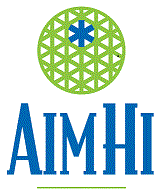One Zero Source Article | Comments Courtesy of Matt Zavadsky
Interesting profile of Ambulnz… Most notable quote is at the end:
If there’s one thing observers can agree on it’s that the emergency medical service needs an overhaul: EMTs need higher pay, better career opportunities, affordable benefits, and less grueling schedules. As aging populations increase, these needs will only become more apparent. Unfortunately, Ambulnz, a company focused on commoditizing and optimizing an already precarious workforce, is not likely to alleviate these issues.
This is the reason many of us, and our respective associations, are working so hard to change the economic model for EMS away from simply a per-transport model to one based on the value EMS systems can bring by serving in a triage and patient navigation role.
Tip of the hat to our friend Bob McCaughan of the Allegheny Health Network for finding this article!
------------
Ambulnz Promised to Disrupt Emergency Transport — But Workers Paint a Grim Picture
The company promises EMTs a “flexible schedule” and “a path to entrepreneurship.”
Ashwin Rodrigues
October 23, 2019

Cory, a 26-year-old emergency medical services professional, had been working in southern California for several years when he started seeing teal ambulances, emblazoned with the words “Ambulnz,” zipping around Los Angeles. Founded in 2015, Ambulnz transplanted the push-button ride hailing model to non-emergency medical transport, offering on-demand patient transport services for hospitals and other care providers. The majority of Ambulnz business involves moving patients from hospitals to their homes, or transferring patients between medical facilities. This type of service is called interfacility transfer, or IFT.
Cory, who requested anonymity for this piece, was enrolled in paramedic school at the time. He needed a part-time gig to complete his internship so he could simultaneously complete his paramedic classes, and the Ambulnz gig fit into his schedule.
After applying and interviewing with Ambulnz, Cory received an offer, and went to the company’s office in Carson, California, for orientation. The office, he remembers, was “pretty legit” and “very modern looking.” It reminded him of an Apple Store. There was an employee break room with snacks.
But his experience with Ambulnz quickly soured. Cory says that in his orientation class of approximately 32 people, most new employees seemed “socially awkward, or flat out weird, as if they were turned down by every other ambulance company.” He says one new hire told him that his only serious prior work experience was 12 years as a seasonal Halloween scare actor at Universal Studios. As part of the orientation, Cory says, the class FaceTimed with Ambulnz CEO Stan Vashovsky, who bragged about the company. “It was awkward,” he recalls.
Though he says he’d been told in his job interview that he’d be paid $16 per hour, at the orientation that rate dropped to $12. Then Ambulnz told him the station he’d be working at had changed to a location one hour further from his home. After 20 minutes as an Ambulnz employee, Cory quit. He signed a voluntary resignation form, received a check for four hours of work, and went home.
Continue Reading►


